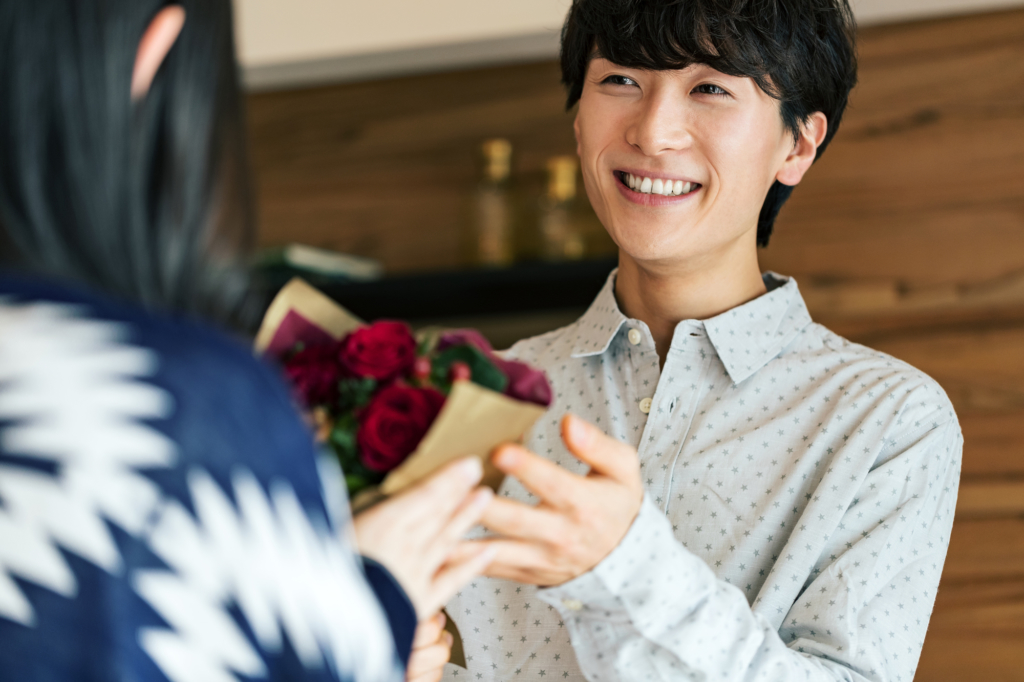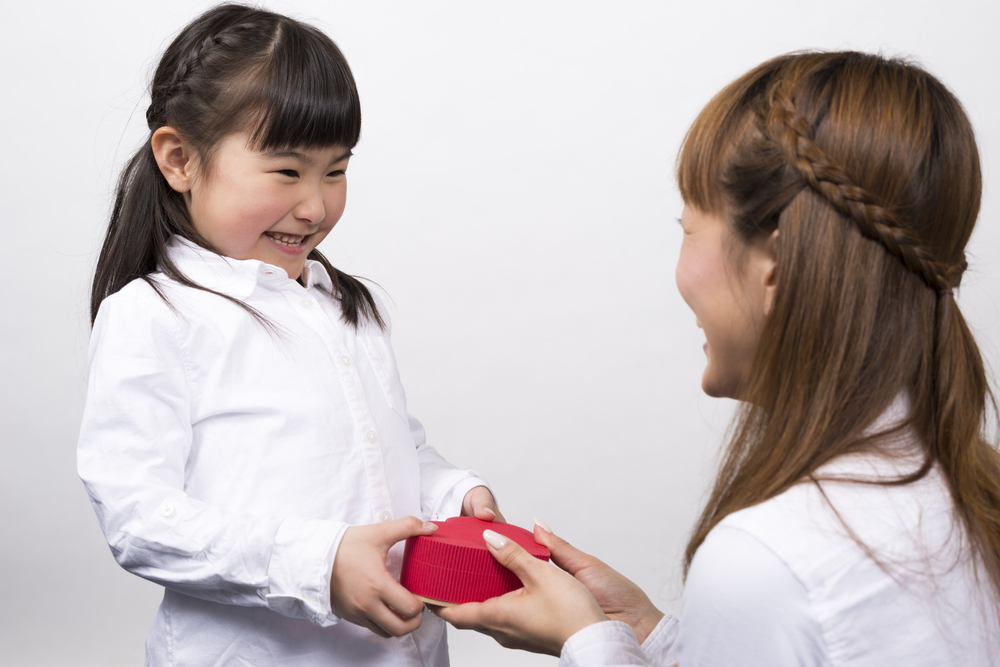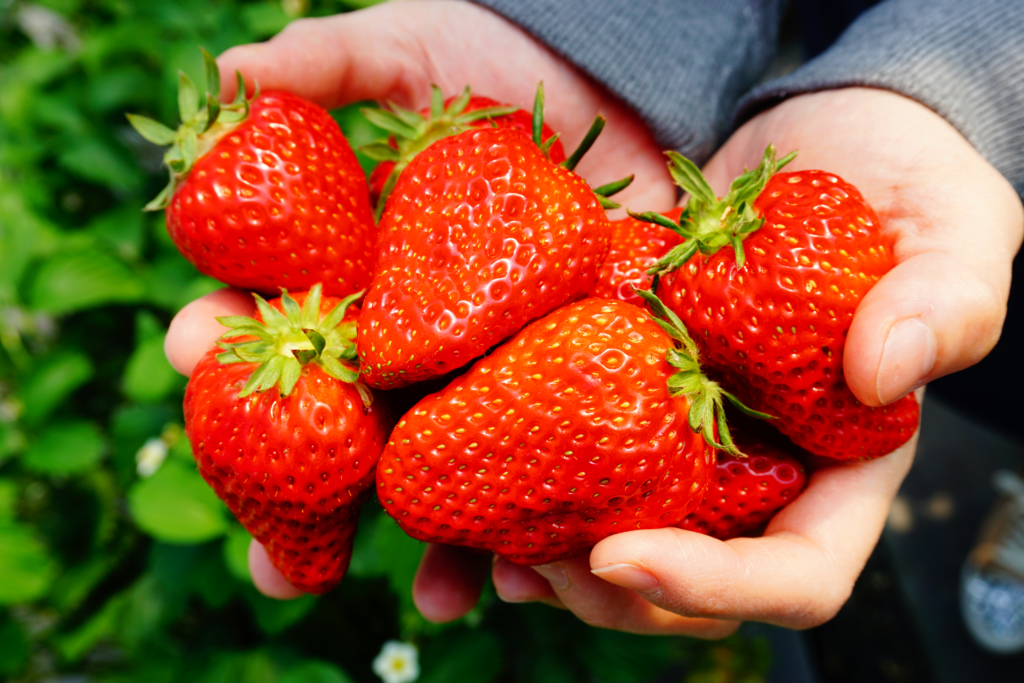How Is Valentine’s Day Celebrated?

So how did this curious turn of affairs come about? Why was it that Japanese ladies felt compelled to give men chocolates on Valentine’s Day?
Word has it that in the 1950s, a Japanese confectioner called Mary Chocolate sold heart-shaped chocolates at its flagship store in Shinjuku, Tokyo. Momentum picked up, with other chocolate companies following suit. Since some of the first advertisements for Valentine’s Day misconstrued it as a day whereby ladies gave men chocolates, Japanese women – who were normally too shy to confess their feelings for a special someone – quickly adopted this tradition so that they could make their emotions known.

The rest is history, as come every Valentine’s Day, leading department stores and confectioneries in Japan dazzle their customers with a wide array of chocolate treats. Ladies are indeed spoilt for choice as the limitless availability of flavors, designs, shapes, and sizes empower them to choose the ideal gift that will satisfy their romantic interest’s palate and convey their feelings.
Not only that, ladies who wish to handmake their own chocolates can have a whale of a time buying ingredients and baking tools that will enable them to flaunt their baking skills.
What Is White Day?

Lest that you think that Japanese guys are let off the hook when it comes to Valentine’s Day, read on. In an interesting display of the reciprocal nature of relationships in Japan, Japanese men are expected to return the favor and offer their lady friends gifts one month later, on March 14.
March 14 is known as “White Day,” and the origin of this day dates back to 1978, when a department store called Iwataya launched the celebration as “Marshmallow Day.” It then changed it to “White Day” so as to afford people more possibilities due to its open-ended nature. This initiative soon caught on in Japan and is now anticipated with much fervor by Valentine’s Day gift-givers.

On White Day, although many gentlemen choose to give ladies white chocolates and other white gifts, they do not specifically have to choose white gifts. What’s noteworthy is that different gifts can be perceived as having certain meanings. For instance, marshmallows, although the original White Day gift, can now be assumed to mean you dislike the receiver and were unhappy about receiving their Valentine’s chocolate. Candies mean you like the person, and the flavor of the candy can even denote the level of the relationship. Cookies offer the meaning of friendship, and macarons are for special people.
However, do not worry too much about the potential meaning of your gift if you know it is something the recipient will enjoy and you make your feelings clear!
One last fun fact about White Day: some guys, who go all out to impress the lady they love, will practice “sanbai gaeshi” (三倍返し, meaning three times the return) and prepare a gift that is three times the monetary value of the chocolates they received on February 14.
The Types of Chocolate Given on Valentine’s Day in Japan
1. Honmei Choco (True Love Chocolates)

Not wanting to leave anyone out, a Japanese lady will usually give out chocolates to all her friends and associates. However, the one gift that is closest to her heart will be “honmei choco” (本命チョコ). The word “honmei” means “true feelings,” so these chocolates are a demonstration of her love and affection for the man she most desires. So, only one lucky person will get the privilege of feasting on a box of honmei choco.
When Valentine’s Day is around the corner, many supermarkets, specialty baking stores, and even 100 yen shops will display a wide array of baking tools and equipment. This is because many Japanese ladies – not wanting to settle for store-bought chocolates – are fervent about making honmei chocolates from scratch by themselves. Hence, if you receive a box of fancy handmade chocolates, count yourself blessed, for your giver has obviously invested a lot of time and effort into customizing chocolates to your preference.
Another way to know that you have been bestowed with honmei choco is when the chocolates look exquisite and sophisticated, not unlike precious jewels. Some ladies may not be able to spare the time to make chocolates by hand, but will nonetheless want to confess their feelings for a special someone. Regardless of whether these chocolates are store-bought or homemade, one thing’s for sure: you are the chosen one, so congratulations are in order!
2. Giri Choco (Obligation Chocolates)

Chocolates that are of lesser priority to Japanese ladies are known as “giri choco” (義理チョコ), which are essentially obligation chocolates. Japanese people value relationships and often take the initiative to nurture them. Therefore, as long as you have made friends with the local community, you are very likely to receive chocolates from your female friends on Valentine’s Day. It is important to note, however, that just because a lady offers you chocolates doesn’t mean that she is harboring romantic feelings for you.
Japanese ladies give giri choco to the men with whom they are not romantically involved – including bosses and colleagues – because they wish to use Valentine’s Day as an opportunity to express gratitude and appreciation for them. Giri choco are store-bought, look like something that you might buy on a grocery trip, and are not too expensive.

If you receive giri choco, rejoice in the pleasure of being remembered and savor them! This is especially so, given the recent trend of an increasing number of workplaces opting out of this practice because women don’t want to feel pressured into giving their colleagues chocolates. If you are a foreign lady joining a Japanese company, it might be wise for you to check with your Japanese female co-workers to understand if the tradition of giving giri choco is still practiced. Other workplaces will have female representatives collecting money from all the ladies so that the appointed representatives can buy chocolates for all their male counterparts.
Incidentally, it seems that girls internalize the cultural practice of giving giri choco from a young age. I used to work in a Japanese elementary school, and come every Valentine’s Day, I would be floored with chocolates eagerly distributed by elementary school girls!
3. Tomo Choco (Chocolates For Friends)

Apart from giving chocolates to the men in their lives, many Japanese ladies are more than happy to do the same for their female friends as a way of showing gratitude for their friendships. Such chocolates will be classified as “tomo choco” (友チョコ, chocolates for friends), which is a heartwarming way of celebrating friendships.
Some Japanese ladies may even arrange to meet up and tuck into tomo choco together with their friends. What better way to bond than savoring yummy chocolates and chatting nineteen to the dozen with your best friend forever. Truly an occasion to remember!
4. Fami Choco (Chocolates For Family)

Other than close-knit female friends, some ladies leverage Valentine’s Day as a chance to express their sincere thanks towards their family members. Indeed, a cohesive family serves as the bedrock of one’s life and provides a refuge from the challenges of working life, so it is understandable why these ladies eagerly pay tribute to their family members through Valentine’s Day gifts.
5. My Choco (Chocolates For Oneself)

We spend the most time with ourselves, so we should practice self-care conscientiously and seek opportunities to pamper ourselves. Valentine’s Day can thus be seen as an opportunity to spoil yourself by buying “my choco” (マイチョコ) – which means “chocolates for oneself” – on this occasion. You can just take a breather, munch on the chocolates, and fill your mind and heart with positive affirmations that will brighten your day.
6. Gyaku Choco (Reverse Chocolates)

If you are not used to the idea of only receiving Valentine’s Day gifts from ladies, fret not. There’s actually nothing to stop you from honoring ladies with gifts on Valentine’s Day. In fact, many Japanese men do just that, so much so that the chocolates they offer ladies are known as “gyaku choco” (逆チョコ, reverse chocolates). Most likely, these gentlemen wish to show their significant others how much they appreciate them, or even spring a surprise on their romantic interest and stand out from other suitors by showcasing how considerate they are!
Other Unique Gifts Besides Chocolates
Since it is the norm for ladies to give men chocolates on Valentine’s Day in Japan, some enterprising ladies choose to give heart-shaped delicacies so as to make their present memorable and stand out from their “competitors” or suit the palate of their partners who may not have a sweet tooth. Here are some unique and attractive items that you can offer your Valentine’s Day gift recipient in lieu of chocolate!
1. Heart-Shaped Pasta

Pasta always makes for a gastronomically good time, so how about surprising the person you love with eye-catching heart-shaped pasta, thus delighting the senses in more ways than one. Most people will feel all warm and fuzzy inside as they see the heart-shaped pasta beckoning lovingly at them, which enhances the tastiness of their meal. After all, who can fail to be moved by heart-shaped pasta?
2. Heart-Shaped Homecooked Meals

As the saying goes, “the way to a man’s heart is through his stomach.” Some imaginative people may choose to declare their love by cooking a special homecooked meal, thus showcasing their delightful culinary skills. Their mission to capture their partner’s heart is also made easier with the availability of many cute and fancy heart-shaped molds at 100-yen shops and home goods stores, so they put their heart and soul into preparing wholesome breakfast sets such as heart-shaped pancakes and eggs, which will bring an appreciative smile to any man’s face as he tucks into them with gusto!
3. Heart-Shaped Strawberries

Japanese strawberries are known for being juicy and sweet, so it is no wonder that some Japanese ladies harness them as a Valentine’s Day gift. To up the saccharine factor of their gift, you can purchase heart-shaped strawberries which are known as “ichigokoro.” Ichigokoro is a combination of the Japanese words for “strawberry” (ichigo) and “heart” (kokoro) and strikes a lasting impression on the recipient’s mind with its distinctive design and heavenly taste.
Closing Thoughts
Now that you have learned about the various types of chocolates and other unique items gifted on Valentine’s Day, you are now ready to usher in this delightful occasion. Enjoy the festivities and remember to say thank you when you receive any chocolates. Most importantly, don’t forget to reciprocate your female friends’ gesture and return them a gift on White Day!
If you want to give feedback on any of our articles, you have an idea that you’d really like to see come to life, or you just have a question on Japan, hit us up on our Facebook!
The information in this article is accurate at the time of publication.

